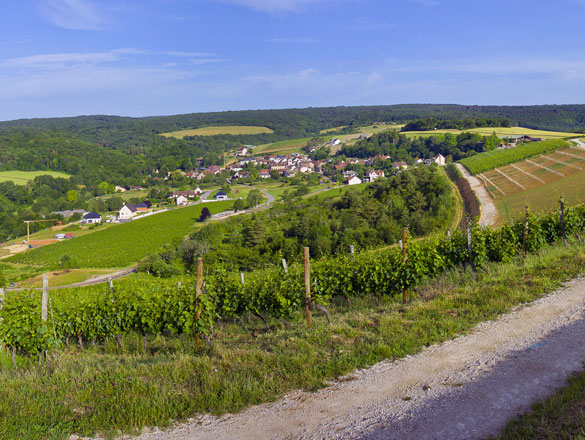

The vineyards of Bourgogne produce some great wines with a historical and international reputation. However, the region is not simply limited to its iconic appellations. In addition to its Village Premier Cru and Grand Cru AOCs, it also produces a range of wonderful Régionale and Village appellations to explore.
You will also find a full list of the Bourgogne’s Climats and lieux-dits on this page.
Check out the complete list of the 84 Bourgogne appellations.
However, your exploration has only just begun. Bourgogne wines have never before offered such high quality. Besides our range of internationally celebrated wines, try some of our lesser-known appellations where there are lots of surprises in store.
And for a fun way to find out more about the wines on offer, try out our “Which Bourgogne wine is right for me?” quiz, or check out Bourgogne Maps to take an interactive tour of the region.
Regional appellation ; Dénomination Géographique Complémentaire
VIGNOBLE DE LA CÔTE DE NUITS
31 juillet 1937
Reds and rosés - Pinot Noir.
Whites - Chardonnay, more rarely Pinot Blanc or Pinot Gris.
Area under production*:
1 hectare (ha) = 10,000 m² = 24 ouvrées.
Reds and rosés: 632.45 ha
Whites: 151.84 ha approx.
Average annual yield**:
1 hectolitre (hl) = 100 litres = 133 bottles.
Reds and rosés: 22,185 hl
Whites: 5,514 hl
*In 2022 **5-year average, 2017-2021
The Bourgogne Hautes Côtes de Nuits Régionale appellation covers still red, white, and rosé wines produced in an area covering 19 villages that was defined in 1961.

The reds are cherry red in color, with hints of ruby. The nose releases notes of cherry, blackcurrant raspberry, wild strawberry, pomelo, sloe, and redcurrants, with touches of mint, licorice, pepper, leather, and tobacco. In the mouth, the attack is smooth and forthright, with fleshy fruit and crisp, fairly structured tannins. The finish is fresher, with hints of menthol and licorice, sometimes evolving to spicy aromas.
The whites are pale yellow to pale gold in color with hints of silvery yellowgreen. The nose offers touches of lemon, apple, peach, quince, hazelnut, acacia flowers, and lime blossom, sometimes wrapped up with hawthorn blossom, pear, pineapple, and almond. In the mouth, it is balanced between freshness and smooth fruitiness, allowing one to appreciate a melting, saline finish, often marked by notes of lemon and tropical fruit.

Red: Its fleshy fruitiness and crisp structure make it a great partner for convivial dishes like beef fondue, tartiflette, country salad, pork with lentils, shepherd’s pie, chicken brochettes with herbs, and mushroom pâté on toast with an aperitif. More powerful wines pair well with filet mignon of pork and stuffed mushrooms, pan-fried chicken with mushrooms, and steak with a pepper sauce. In terms of cheeses, try it with a mature Soumaintrain, an unpasteurized Reblochon, or a Morbier. You will be surprised by its vitality when paired with a cherry clafoutis or a gratin of summer fruits.
Serving temperature: 14-16°C.
White: Its spry and harmonious character will go down well as an aperitif with savory tapas, gougères, flammekueche, or Maroilles tart. A timbale of seafood, marinated salmon, or fish roasted with vegetables would bring out all its freshness. Smoother wines with tropical aromas would go well with fresh foie gras with fleur de sel, salmon pâté, fish in sauce, or creamy poultry dishes. Soft cheeses, goat cheese with honey, Chaource and Comté also suit it well.
Serving temperature: 10-13°C.

The vines of Bourgogne Hautes Côtes de Nuits are located parallel to the Côte de Nuits, from Gevrey-Chambertin to Corton wood. The first mention of this vineyard takes us back to Meuilley in 761, when the Château de Vergy was the head of the Cluniac Abbey of Saint-Vivant de Vergy, which produced Romanée-Conti, La Romanée-Saint-Vivant and Le Clos Saint-Denis wines.
The vines underwent a cycle of expansion, linked to economic growth throughout the 19th century, until phylloxera struck. Between 1910 and 1936, almost half the vines disappeared. And since the 1950s, it has taken two generations of winegrowers to patiently and bravely revive the appellation. Current generations are continuing this work and rebuilding the cachet bestowed upon it by the legacy of the Château de Vergy and the Abbey of Saint-Vivant.

The vines of Bourgogne Hautes Côtes de Nuits grow on the slopes of valleys and vales cut out of the limestone plateau at between 275-480m above sea level, mainly facing south, southeast, and southwest. The soil is made up of sedimentary limestone and marl formations from the Middle and Upper Jurassic.
